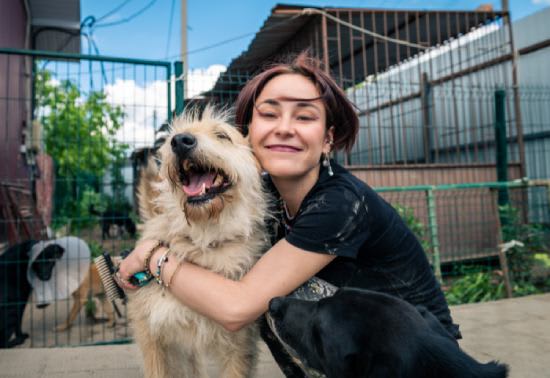
Being prepared is key—from choosing the right companion to selecting from our best pet insurance providers to protect your new family member. This guide will walk you through the essential steps of adopting your first pet, ensuring you're well-prepared for this life-changing decision.
Deciding if You’re Ready for a Pet
Consider your daily schedule, work commitments, and social activities. Are you ready to dedicate time to feeding, exercising, and bonding with your pet? Remember that pets aren't temporary companions—depending on the species, they can be part of your family for 10-20 years.
Financial preparedness is equally crucial. Beyond the initial adoption fees, you'll need to budget for ongoing expenses like food, regular vet check-ups, grooming supplies, and unexpected medical care.
Choosing the Right Pet for You
Selecting the right pet is vital for ensuring a harmonious home environment. Here are some factors to consider:
Size and living space: Assess whether you live in an apartment or a house with a yard. Larger dogs typically need more space.
Energy level: Different pets have varying energy levels. Active breeds require more exercise than others.
Allergies: Consider any allergies within your household that may affect your choice of pet.
Age preferences: Decide if you prefer a puppy or kitten or if an adult or senior pet would be a better fit.
Popular options include dogs, cats, rabbits, and birds, each with unique needs and characteristics that should align with your lifestyle.
Researching and Finding a Reputable Adoption Source
Shelters and rescue organizations are your best bet for pet adoption. Most provide comprehensive health services (vaccinations, spaying/neutering, microchipping) within the adoption fee.
While shelters offer various pets, breed-specific rescues specialize in particular breeds and their unique needs. Before making your decision, here are the key questions to ask during your shelter visit:
What screenings and vaccinations are included, and can I see medical records?
Is there information about the pet's previous home or behavior?
What's your return policy and post-adoption support system?
How do you screen potential adopters and handle the transition?
Remember to watch out for red flags. If an organization is reluctant to show its facilities, pressures quick decisions, or can't provide health records, keep looking.
Avoid pet stores and online sellers, as they often source from puppy mills where profit trumps animal welfare. The right adoption source will focus on making perfect matches, even if it takes longer.
Securing Pet Insurance: A Critical First Step
Getting pet insurance before your first vet visit is one of the smartest decisions you can make as a new pet owner. Emergency veterinary bills can range from hundreds to thousands of dollars, and having insurance prevents you from choosing between your pet's health and your savings.
Why timing matters: Sign up immediately after adoption, before your first vet visit. This ensures any future health issues will be covered, as insurance won't cover pre-existing conditions. New pet owners often find better rates on coverage when their pets are young and healthy.
Understanding Pet Insurance Coverage Types
Accident and illness plans: The most comprehensive option covering injuries, diseases, and chronic conditions
Accident-only coverage: A more affordable option focusing on emergency injuries
Wellness add-ons: Optional coverage for routine care like vaccinations and check-ups
Tips for finding affordable and reliable pet insurance providers
Compare pet insurance deductibles, reimbursement levels, and annual limits
Look for plans covering the most common pet health issues in your pet's breed
Check if the plan's coverage grows with your pet's age
Verify if your preferred vet accepts the insurance
Most pet owners find the monthly premium (often $30-60 for dogs, $15-30 for cats) worth the peace of mind. Remember, getting coverage early means you'll likely pay lower premiums and have fewer exclusions.
Preparing Your Home for Your New Pet
A well-prepared home helps your new pet adjust quickly and safely. Here's what you need to focus on:
Pet-proofing your space: Remove toxic plants and secure loose wires. Store cleaning supplies in locked cabinets, and remove small objects that could be swallowed. Create a quiet retreat space where your pet can feel secure when overwhelmed.
Essential supplies: Start with the basics, like sturdy food and water bowls, comfortable bedding, and appropriate toys for mental stimulation. Add grooming tools and pet-specific cleaning supplies. For cats, set up a litter box in a quiet, accessible spot. Choose a crate or carrier that's the right size for your pet's needs.
The Adoption Process: What to Expect
The adoption process typically involves these steps:
Application process: Complete a detailed form about your living situation and pet experience. Many shelters require references and conduct a brief interview.
Meet potential pets: Schedule time to interact with different animals. Bring all household members, as most shelters require a family meet-and-greet.
Adoption fees: Be prepared for fees ($50-$300) that cover initial care, including vaccinations, microchipping, and spaying/neutering.
Health check-ups: Review your new pet's medical history and schedule their first vet visit. Most shelters provide initial health screenings before adoption.
Bringing Your Pet Home: The First Days
The first week is crucial for helping your pet adjust to their new home. Here's how to make the transition smooth:
Begin slowly: Give your pet access to just one or two rooms initially. Too much space can be overwhelming for a new pet.
Create a routine: Set consistent meal times (2-3 times daily) and bathroom breaks (morning, after meals, bedtime). Regular exercise and play sessions should be part of their daily schedule.
Make introductions: Introduce family members one at a time to avoid overwhelming your pet. Keep meetings with other pets brief and supervised, gradually exposing them to new spaces in your home.
Minimize stress: Keep their food, water, and bed in fixed locations to provide a sense of security. Use a calm voice and provide a quiet space where they can retreat when feeling overwhelmed.
Coping With Behavioral Problems and Training
Success with your new pet comes down to consistency and positive reinforcement. Here's what to focus on:
Basic training: Start with essential commands and house rules first. Focus on one behavior at a time, using treats and praise to reward success.
Set boundaries: Establish clear rules from day one about furniture access, feeding times, and off-limits areas. Everyone in the household should enforce the same rules.
Daily enrichment: Regular exercise and playtime prevent boredom-related behavior issues. Mix physical activity with mental challenges like puzzle toys or training games.
Address issues early: If you notice concerning behaviors, consult your vet or a professional trainer. Many behavior problems are easier to correct when caught early.
Maintaining Your Pet’s Health and Well-Being
A healthy pet is a happy pet. Here's what you need to prioritize:
Regular check-ups: Schedule annual veterinary visits for vaccinations and health screenings. Young pets, seniors, and those with health conditions may need more frequent visits.
Proper nutrition: Feed a high-quality diet appropriate for your pet's age and size. Maintain consistent meal times and monitor their weight for any sudden changes.
Daily care routine: Establish regular grooming sessions to check for skin issues, fleas, or unusual bumps. Brush teeth regularly and keep nails trimmed to prevent health issues.
Watch for changes: Learn your pet's normal behavior and appetite patterns. Contact your vet if you notice changes in eating, drinking, energy levels, or bathroom habits.
Conclusion
Pet adoption is a rewarding journey that just requires thoughtful preparation. By following these guidelines and securing proper insurance coverage early, you'll be ready to provide a loving home for your new companion.
Ready to take the next step? Visit your local shelter to meet potential pets, and remember to check our best pet insurance providers before bringing your new friend home.





